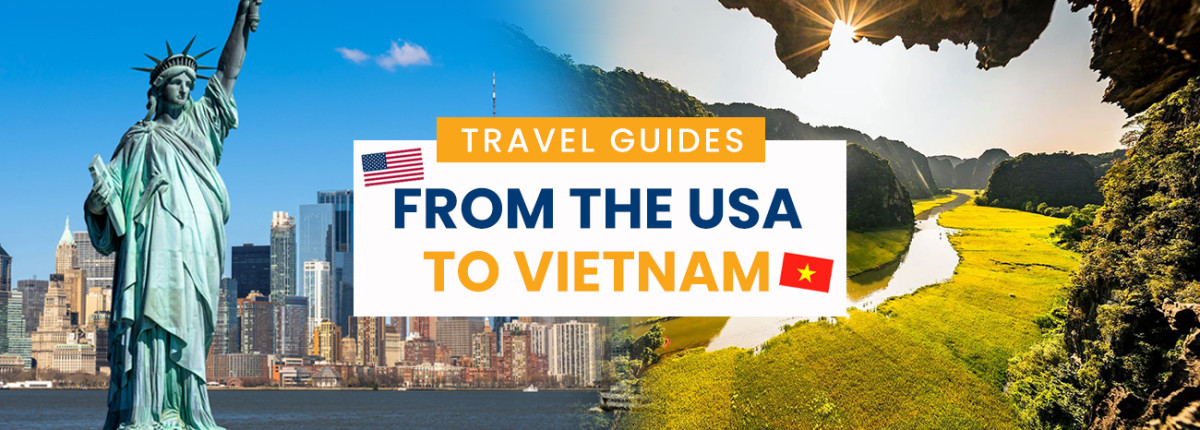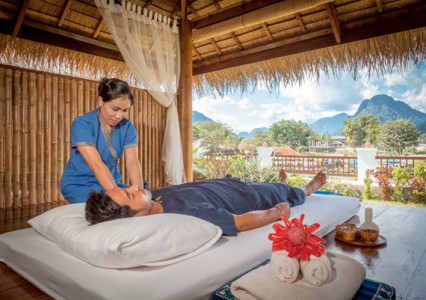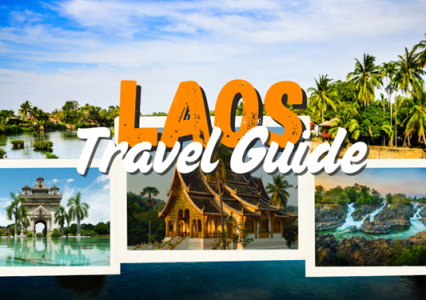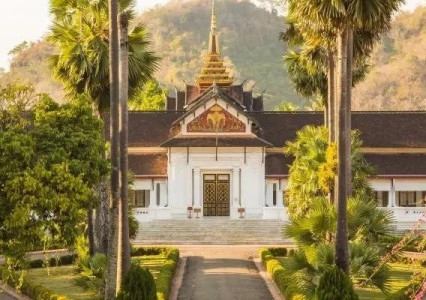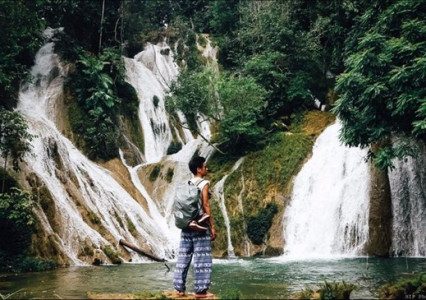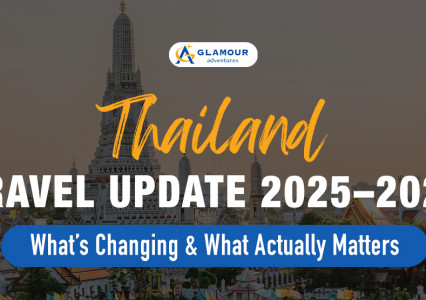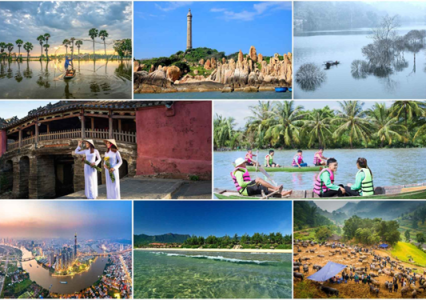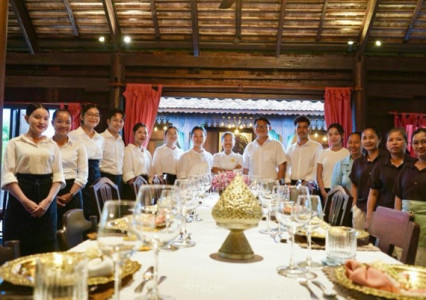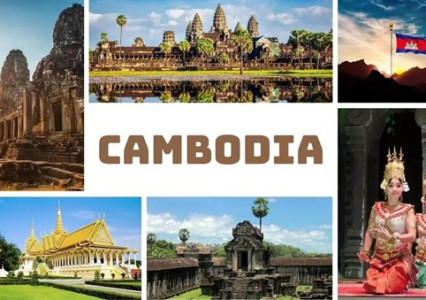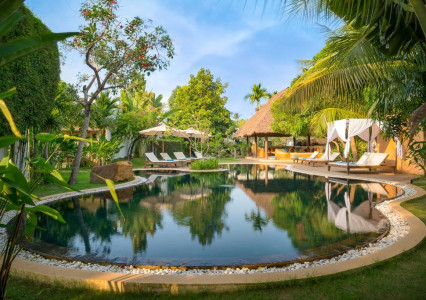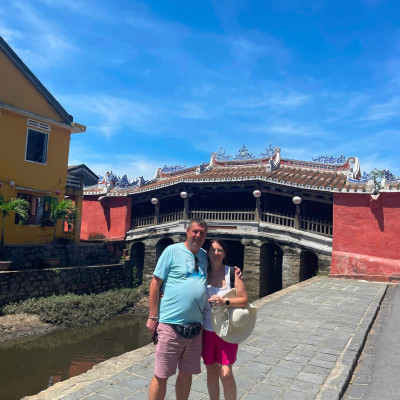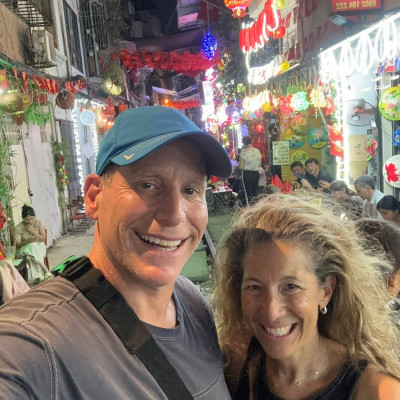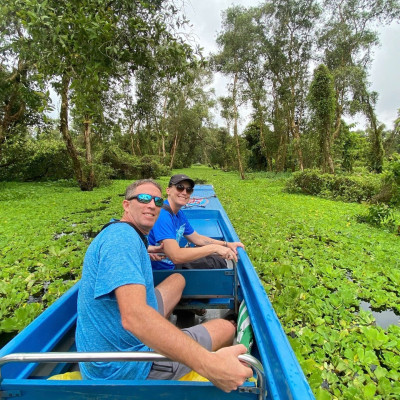The Complete Guide to Visiting Vietnam from the USA
Getting to Vietnam from the USA
There are currently no direct flights from the U.S. to Vietnam, but multiple one-stop options are available through major international hubs.
Popular departure cities in the U.S.:
- Los Angeles (LAX)
- San Francisco (SFO)
- New York (JFK)
- Seattle (SEA)
- Dallas (DFW)
Common layover cities:
- Tokyo, Seoul, Taipei, Hong Kong, or Doha
Flight time: Around 18 to 24 hours, depending on the route and layover duration.
Major arrival airports in Vietnam:
- Tan Son Nhat International Airport (Ho Chi Minh City)
- Noi Bai International Airport (Hanoi)
- Da Nang International Airport (Da Nang)
Travel Tips
- Booking: Reserve tickets 2–6 months in advance for better deals.
- Travel Days: Mid-week flights (Tuesdays and Wednesdays) often have lower fares.
- Fare Alerts: Set up alerts on airline websites or travel platforms to monitor price drops.
- Transit Considerations: If opting for connecting flights, ensure you have the necessary transit visas if required.
Vietnam Visa Options for U.S. Citizens
1. E-Visa (Electronic Visa)
Vietnam offers an e-visa system for U.S. citizens, allowing for both single and multiple entries with a maximum stay of up to 90 days.
- Validity: Up to 90 days.
- Entry Types: Single or multiple entries.
- Cost: $25 for single-entry; $50 for multiple-entry.
- Processing Time: Typically 3–5 working days.
- Application Portal: Vietnam E-Visa Official Website
Requirements:
- Passport valid for at least six months beyond the intended stay.
- At least one blank visa page in the passport.
- Digital passport-sized photo and a scanned copy of the passport's biographical page.
- Valid email address for communication.
- Planned entry and exit dates, along with entry and exit points in Vietnam.
Important Notes:
- E-visas cannot be extended or renewed from within Vietnam.
- Ensure all information is accurate; discrepancies can lead to denial of entry.
- E-visas are accepted at 33 designated ports of entry, including major international airports and land crossings.
2. Visa on Arrival (VOA)
While Vietnam offers a Visa on Arrival option, it is primarily applicable to travelers arriving by air and requires prior approval.
- Pre-Approval: Obtain a visa approval letter from a Vietnamese travel agency before departure.
- Process: Present the approval letter upon arrival at a Vietnamese airport to receive the visa.
- Limitations: VOA is not available for land or sea entries and is not recommended without prior approval.
3. Visa via Vietnamese Embassy or Consulate
U.S. citizens can apply for a visa through the Vietnamese Embassy or Consulate in the United States.
- Application Methods: In-person or by mail.
- Processing Time: Standard processing is approximately 5 working days; expedited services are available for an additional fee.
- Required Documents:
- Completed visa application form.
- Passport valid for at least six months beyond the intended stay.
- Passport-sized photos.
- Visa fee (varies based on visa type and processing time).
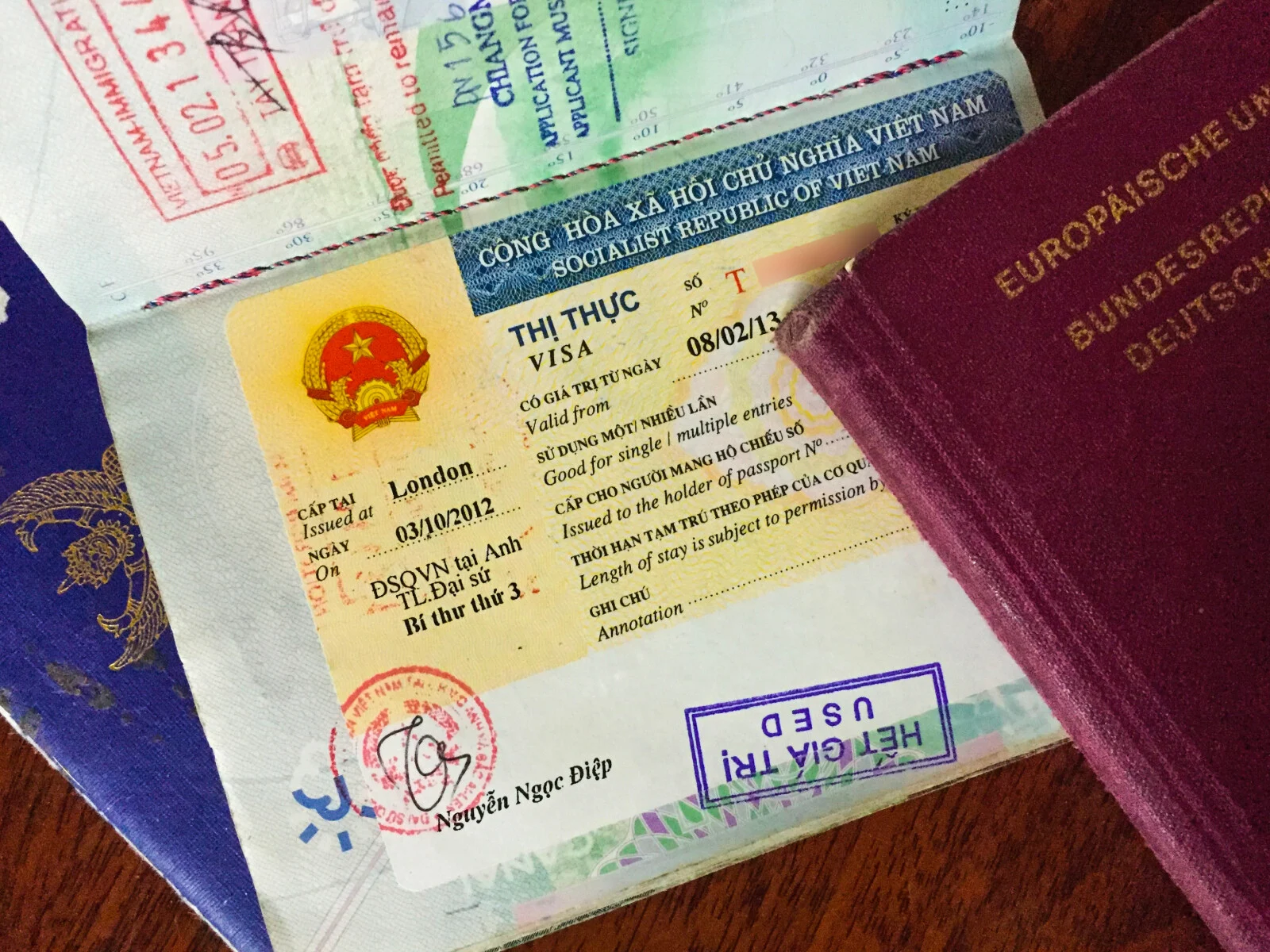
Entry Requirements
Regardless of the visa type, U.S. travelers must ensure:
- Their passport is valid for at least six months beyond the planned stay in Vietnam.
- The passport contains at least one blank visa page.
- They enter and exit Vietnam using the same passport.
Summary
| Visa Type | Validity | Entry Type | Cost | Processing Time | Application Method |
|---|---|---|---|---|---|
| E-Visa | Up to 90 days | Single/Multiple | $25/$50 | 3–5 working days | Online |
| Visa on Arrival | Varies | Single/Multiple | Varies | Upon arrival | Pre-approval letter via travel agency |
| Embassy Visa | Up to 1 year | Single/Multiple | Varies | ~5 working days | In-person or mail application to embassy/consulate |
Best time to travel to Vietnam
North Vietnam (Hanoi, Sapa, Halong Bay)
Northern Vietnam has a distinct seasonal climate, with cold, dry winters from December to February, where temperatures can drop as low as 4°C—especially in mountainous areas like Sapa. Summers (May to August) are hot and humid.
✅The best time to visit is during spring (March–April) and autumn (September–November) when the weather is mild, sunny, and ideal for sightseeing and outdoor adventures.
Central Vietnam (Hue, Hoi An, Da Nang)
This region experiences typhoon season from August to November, bringing heavy rains and strong winds, especially along the coast. Rain typically eases by February, giving way to dry, sunny weather.
✅ The ideal travel window is from February to August, with July and August offering hot, sunny days around 30°C—perfect for beach lovers.
South Vietnam (Ho Chi Minh City, Mekong Delta)
With tropical temperatures year-round, southern Vietnam is generally warm and travel-friendly at any time. The dry season runs from December to May, while the rainy season lasts from June to November.
While downpours can happen, they're usually short and refreshing. The monsoon months offer stunning scenery, especially in the Mekong Delta.
✅March to May can be extremely hot, with temperatures soaring to 40°C, so be prepared if traveling during this period.
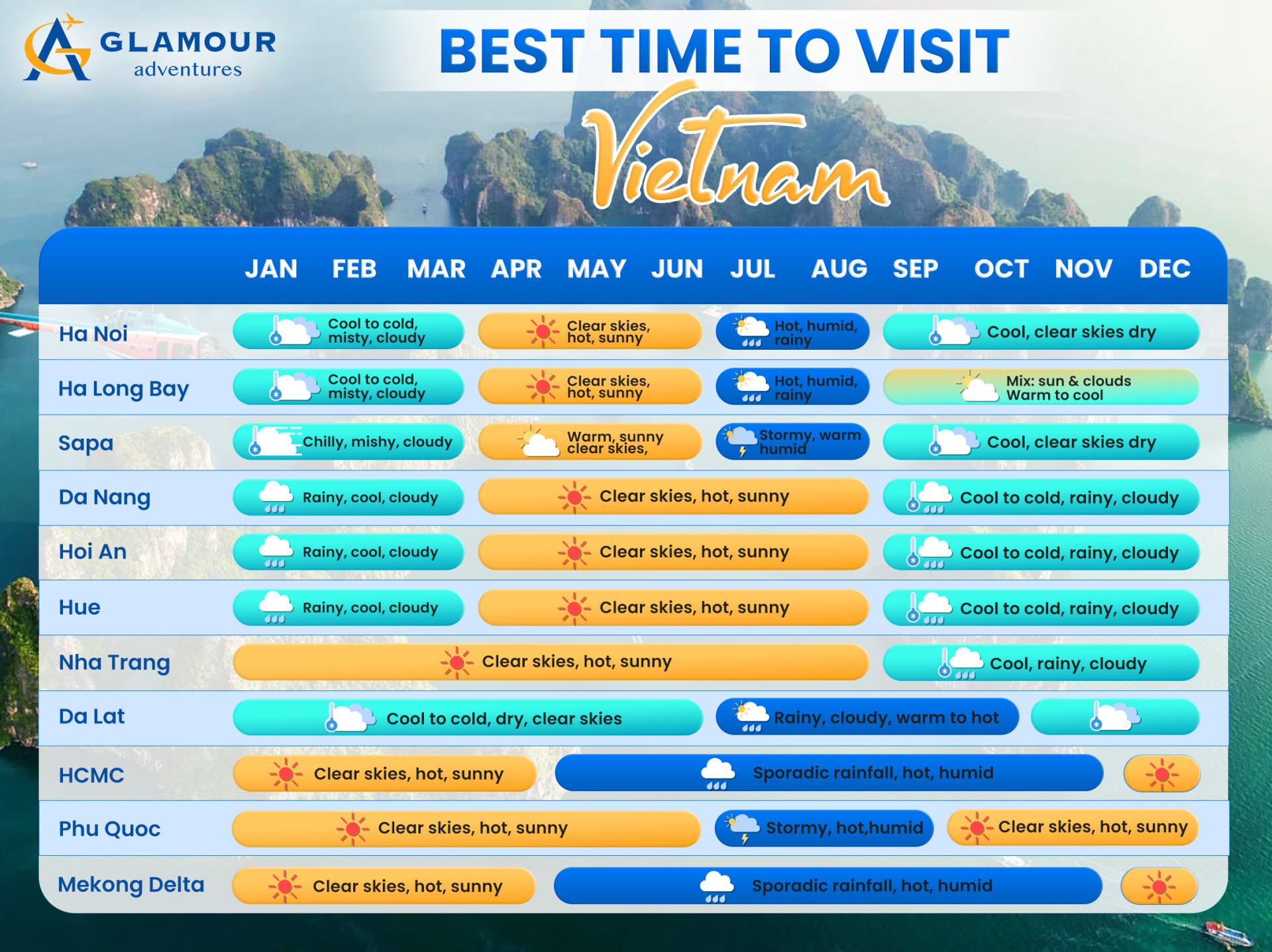
Top Destinations in Vietnam
Hoi An
Hoi An enchants visitors with its beautifully preserved ancient town, characterized by yellow-walled houses, lantern-lit streets, and historic bridges. The city is also a culinary gem, offering unique regional dishes such as Cao Lau noodles. Hoi An’s bustling night market is the perfect place to shop for handmade goods, silk products, and traditional souvenirs.
Da Nang
A balanced mix of beachside relaxation and cultural discovery, Da Nang is an ideal destination for a laid-back holiday. Mornings can be spent enjoying the coastline and ocean views, while afternoons invite exploration of ancient temples and pagodas. In the evening, head to one of Da Nang’s night markets to sample local street food and pick up memorable souvenirs.
Ha Long Bay
Located in northeastern Vietnam, Ha Long Bay is a natural wonder known for its towering limestone formations and emerald waters. It’s a must-visit for those seeking an unforgettable experience. Visitors can explore the bay by traditional wooden junk boats or paddle through smaller coves and hidden lagoons by kayak. The dramatic scenery and peaceful atmosphere make it a highlight of any trip to Vietnam.
Phu Quoc
This idyllic island is known for its lush landscapes and diverse range of activities. Whether you're lounging on the beach, exploring traditional fishing villages, or hiking through national parks, Phu Quoc has something for everyone. Water enthusiasts can enjoy snorkeling, diving, and kayaking, while those seeking relaxation will find peace at the island's many serene spas. Be sure to try the local seafood and visit the lively night markets for an authentic experience.
Hanoi
The capital city of Vietnam, Hanoi is a captivating mix of history and modernity. Visit the Ho Chi Minh Mausoleum, explore the Old Quarter, enjoy traditional water puppetry shows, and try authentic Vietnamese cuisine in this bustling city.
Sapa
Located in the northern highlands, Sapa is renowned for its stunning terraced rice fields and breathtaking mountain views. It's a great destination for trekking, with numerous trails that take you through traditional ethnic minority villages. Whether you're exploring the Fan Si Pan mountain—the highest peak in Vietnam—or immersing yourself in the rich cultural heritage of the area, Sapa offers a unique experience for nature lovers and cultural enthusiasts alike.
Nha Trang
Nha Trang is a picturesque coastal city perfect for travelers who love the water. Its clear blue seas are ideal for swimming, scuba diving, and snorkeling. For those who prefer land-based adventures, nearby mountains offer scenic hiking trails, and natural hot springs provide a relaxing retreat. Nha Trang is also known for its vibrant food scene, especially its abundance of fresh, flavorful seafood.
Hue
Once the capital of Vietnam, Hue is a city steeped in history. Visitors can explore the Imperial City, a UNESCO World Heritage site that features impressive palaces, temples, and the Royal Tombs. The Perfume River runs through the city, adding to the serene and historical atmosphere. Hue is also famous for its distinctive cuisine, with dishes like bun bo Hue (spicy beef noodle soup) being local favorites.
Phong Nha Ke Bang National Park
For adventure seekers and nature lovers, Phong Nha-Kẻ Bàng is a must-visit. Known for its massive caves and lush forests, the park is home to some of the largest caves in the world, including Son Doong Cave. Visitors can enjoy activities like caving, hiking, and exploring waterfalls in one of the most pristine natural environments in Vietnam.
Can Tho
Located in the Mekong Delta, Can Tho offers a fascinating glimpse into rural life in Vietnam. The floating markets on the Mekong River are a major draw, with boats filled with fresh produce and local goods. Visitors can explore the lush waterways by boat, witness daily life on the river, or visit nearby traditional villages to learn about local crafts and agriculture.
Ninh Binh
Often referred to as "Halong Bay on land," Ninh Binh is a tranquil destination filled with limestone karsts, lush rice paddies, and caves. A boat ride through the Tam Coc area or a visit to the stunning Trang An Scenic Landscape Complex offers breathtaking views and a peaceful escape from the crowds. Ninh Binh is also home to Hoa Lu, the ancient capital of Vietnam, and the Bich Dong Pagoda.
Mui Ne
A popular beach destination on the south-central coast, Mui Ne is known for its stunning sand dunes, particularly the red and white dunes that create a dramatic landscape. It’s also a great spot for windsurfing and kitesurfing, as the area has strong winds. The beach town offers a more relaxed vibe compared to other coastal cities, making it ideal for those looking to unwind or enjoy some water sports.
Con Dao Islands
For those seeking seclusion and natural beauty, the Con Dao Islands are an off-the-beaten-path paradise. This archipelago offers pristine beaches, lush forests, and historical sites. The Con Dao National Park is home to diverse wildlife, including sea turtles, making it a great destination for eco-tourism. The islands also have a dark history as a former site for political prisons, with the Con Dao Prison offering a sobering glimpse into Vietnam’s past.
Top Things to Do in Vietnam
- Take a cooking class and master the art of iconic Vietnamese dishes like pho, spring rolls, and banh mi.
- Explore the countryside by bike or motorbike, immersing yourself in the peaceful rhythms of rural life.
- Visit a floating market in the Mekong Delta and witness the vibrant exchange of goods on the water, a truly unique experience.
- Embark on a cruise through Ha Long Bay, where you’ll be mesmerized by the towering limestone karsts and emerald waters.
- Trek through the hills of Sapa, discovering the beauty of the landscape and connecting with ethnic minority communities who have called the area home for centuries.
- Discover the Ancient Town of Hoi An Stroll through the charming streets of Hoi An, known for its preserved ancient architecture, lantern-lit nights, and delicious regional cuisine. Visit the bustling night market for unique souvenirs.
- Indulge in some of Vietnam's best street food in the bustling streets of Ho Chi Minh City, Hanoi. From pho and banh mi to fresh spring rolls, the food scene here is a must for any food lover.
- Immerse yourself in Vietnam's royal history by visiting the ancient Imperial City of Hue, where the Nguyen Dynasty once ruled. Wander through the grand Royal Tombs, palaces, and temples.
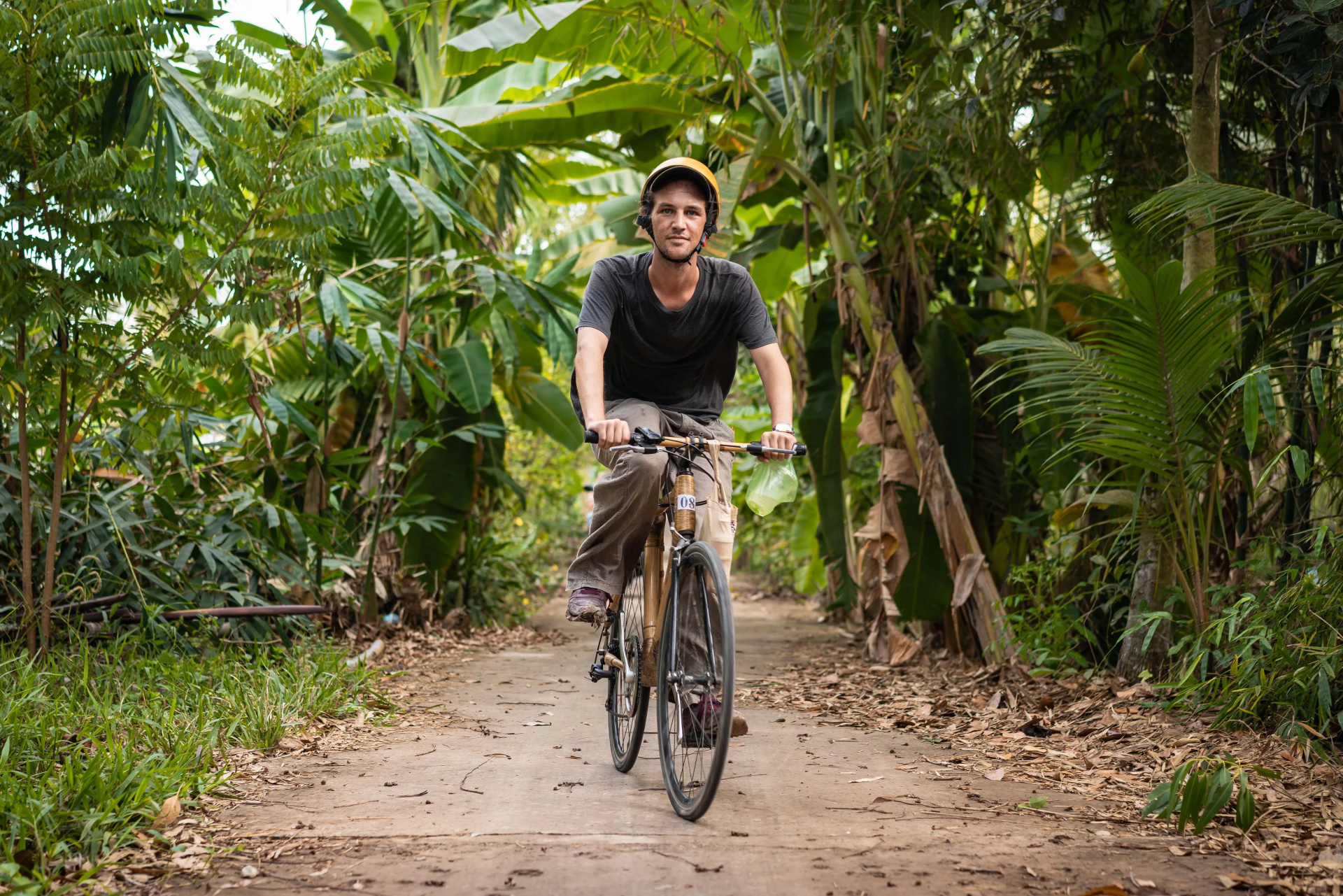
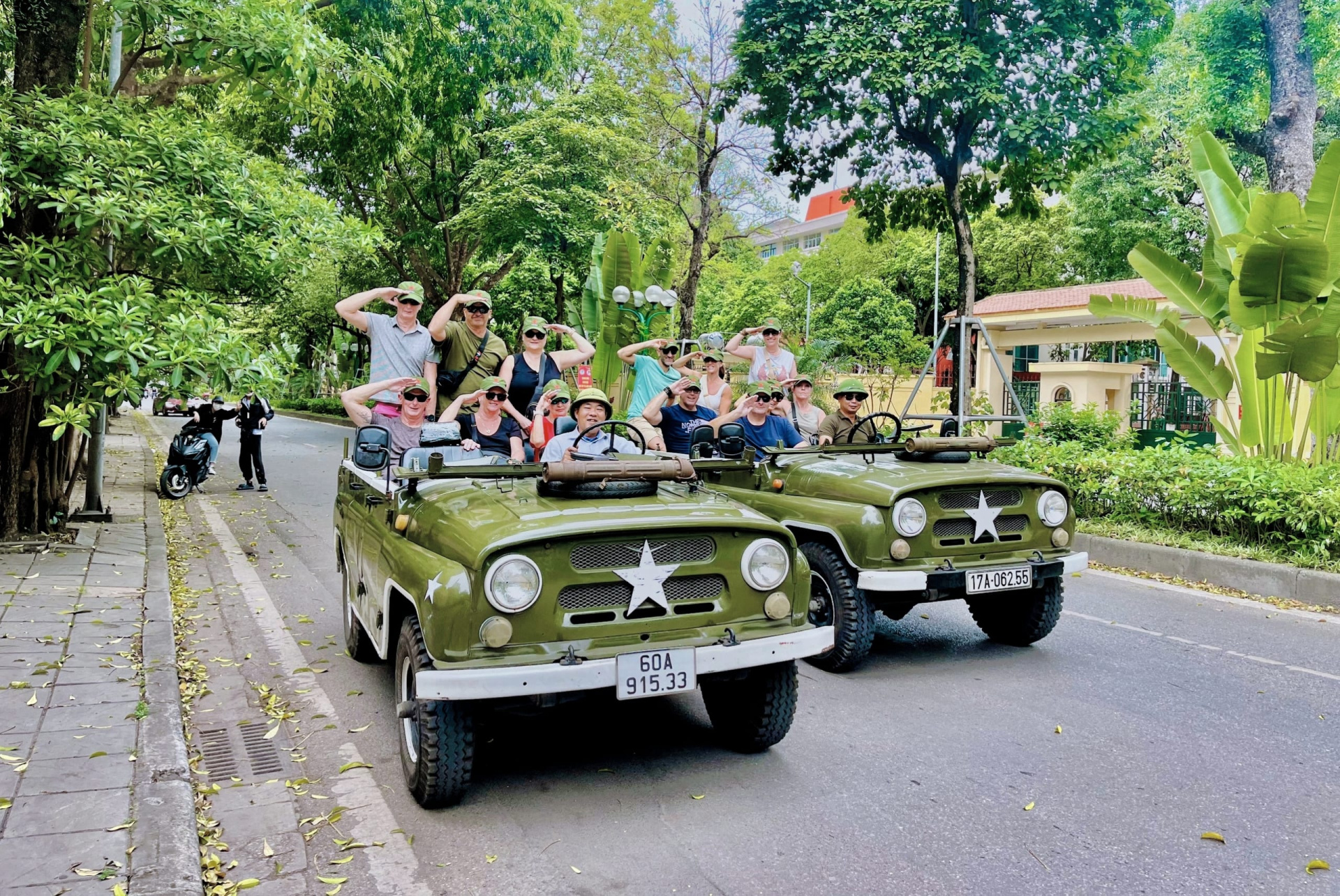
Tips for Traveling to Vietnam from the USA
Planning a trip to Vietnam from the U.S. involves more than just booking a flight. Here are key tips to ensure a smooth and rewarding experience:
1. Get Your Visa in Advance
U.S. citizens need a visa to enter Vietnam. The easiest option is the e-visa, available online for stays up to 90 days. Make sure to:
- Apply at least one week before departure.
- Double-check your details (name, passport number, entry port).
- Print a hard copy of your visa for arrival.
2. Check Your Passport
Ensure your passport is:
- Valid for at least 6 months beyond your entry date.
- Has at least one blank page for stamping.
3. Book Flights Early
- Consider connecting flights through Tokyo, Seoul, or Taipei to save money.
- Use tools like Google Flights or Skyscanner to compare prices.
- If available, Vietnam Airlines offers a direct route from San Francisco to Ho Chi Minh City.
4. Get Travel Insurance
Medical care in Vietnam must often be paid upfront. Comprehensive travel insurance can cover:
- Emergency medical care
- Trip delays/cancellations
- Lost luggage
5. Vaccinations & Health
While no vaccinations are required, the CDC recommends:
- Hepatitis A and B
- Typhoid
- Tetanus Bring any prescription medications with labels, and consider packing:
- Mosquito repellent
- Anti-diarrheal medication
- Hand sanitizer
6. Money Matters
- The official currency is the Vietnamese Dong (VND).
- U.S. dollars are accepted in some tourist areas, but not widely.
- Bring a debit/credit card with no foreign transaction fees.
- ATMs are widely available in cities but scarce in rural areas.
7. Stay Connected
Buy a local SIM card at the airport (e.g., Viettel, Mobifone) or rent a pocket Wi-Fi device for easy access to Google Maps, Grab, and translation apps.
8. Transport Tips
- Use Grab (Southeast Asia’s Uber) instead of flagging taxis.
- Domestic flights are cheap and efficient for long-distance travel (e.g., Hanoi to Da Nang).
- Trains and buses are scenic but slower—ideal if you have time to spare.
9. Cultural Etiquette
- Dress modestly when visiting temples.
- Take off shoes before entering homes and pagodas.
- Avoid pointing feet at people or religious objects.
- Learn a few basic phrases in Vietnamese—locals appreciate the effort!
10. Watch the Weather
Vietnam’s climate differs by region:
- North: Cooler winters (bring a jacket in Dec–Feb)
- Central: Hot and dry from Jan–Aug, rainy season in autumn
South: Tropical year-round, with a dry season from Nov–Apr

Maximizing Your Vietnam Trip: Tips for Every Traveler
Vietnam promises an unforgettable experience, whether you’re splurging like royalty or traveling on a tight budget. No matter your style, you’ll savor delicious food, explore vibrant cities, immerse yourself in rich cultures, and admire stunning landscapes in one of Asia's most captivating destinations. Check out our creative tips for making the most of your money while exploring Vietnam.
Daily cost:
|
Expense Category |
Budget Traveler |
Mid-range Traveler |
Luxury Traveler |
|
Accommodation |
$8 - $16 |
$16 - $40 |
$60 and up |
|
Food (Street Food) |
$4 - $8 |
$8 - $16 |
$16 and up |
|
Food (Restaurant Meals) |
$6 - $10 |
$12 - $20 |
$20 and up |
|
Transportation |
$2 - $6 |
$6 - $12 |
$12 and up |
|
Sightseeing & Activities |
$4 - $8 |
$8 - $20 |
$20 and up |
|
Miscellaneous |
$2 - $4 |
$4 - $8 |
$8 and up |
|
Total Daily Cost |
$20 - $35 |
$50 - $100 |
$120 and up |
Hanoi or Ho Chi Minh city airport?
Consider flying into Ho Chi Minh City (HCMC) instead of Hanoi. As the largest and busiest airport in Vietnam, HCMC offers more flight options, which often translates to cheaper fares compared to those heading to Hanoi in the north. However, keep in mind that HCMC is a more expensive city, so any savings from your flight could be offset if you stay for an extended period. Plan your itinerary with this in mind.
Traveling overnight
Traveling overnight is a great way to save both money and time in Vietnam. While budget flights can be cheap, they come with a higher carbon footprint. Opting for overnight transportation, like sleeper buses or trains, can be a more eco-friendly and cost-effective option. For longer journeys, such as from Hanoi or HCMC to Hoi An or Nha Trang, overnight travel allows you to skip the cost of one night’s accommodation and still make the most of your daylight hours for sightseeing. Both trains and buses offer reclining seats and horizontal berths for added comfort during the journey.
Eating street food
Eating street food is a must when in Vietnam. Street food is not just affordable but also an essential part of the culture. For a very reasonable price, you can enjoy a wide variety of dishes, from pho and banh mi to banh xeo pancakes and bun cha, as well as bold flavors like banana flower salad and bo la lot (beef skewers wrapped in betel leaves).
Throughout the day, especially at lunchtime and evening, street vendors set up plastic tables and chairs on the sidewalks, giving you a spot to sit while you savor your meal. Night markets and transport hubs are the best places to find a diverse range of tasty options.

Itinerary Flexibility
While planning your trip, leave room for spontaneity. Vietnam has so much to offer, from the bustling streets of HCMC to the tranquil landscapes of Ha Long Bay. Be ready to adjust based on weather, local festivals, or tips from fellow travelers.
Engage with Locals
Strike up conversations with locals to get a deeper understanding of Vietnamese culture and traditions. A little Vietnamese goes a long way, and locals are often happy to help visitors navigate their cities.
Stay Hydrated and Cautious with Food: Vietnam can be hot and humid, so drink plenty of water. If you’re sensitive to street food, start with simple dishes and gradually work your way up to more adventurous options.

Other Articles
YOU MAY ALSO LIKE

23 DAYS - Private Vietnam 23 Days 22 Nights - Major of VietNam Trip
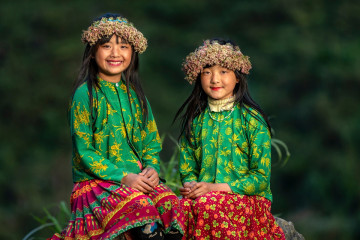
19 DAYS - Private Vietnam 19 Days 18 Nights - Explore Vietnam
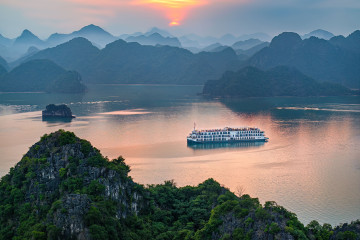
38 DAYS - Private Vietnam- Laos- Cambodia- Thailand 38 Days 37 Nights - Indochina Odyssey
Speak to Your Local Travel Expert





